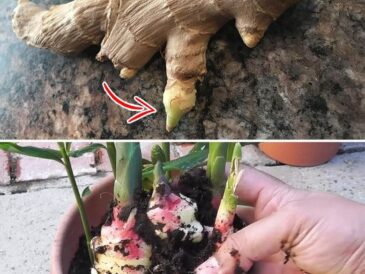
Rosemary (Rosmarinus officinalis) is one of the crown jewels of herb gardens. Not only is it beloved for its earthy, pine-like aroma and culinary uses, but it’s also a robust, evergreen shrub that can thrive in both containers and garden beds. Yet like many herbs, rosemary doesn’t grow well with every plant.
Companion planting – an ancient practice of strategically placing certain plants together – can maximize yields, deter pests, and boost the health and flavor of your crops.
However, it’s just as important to know what not to plant near rosemary as it is to know its beneficial neighbors.
Whether you’re a seasoned gardener or a beginner, this guide will help you master the art of companion planting and keep your rosemary happy and thriving.
Understanding Companion Planting
Companion planting is the practice of growing certain plants near each other to:
- Enhance growth
- Improve flavor
- Deter pests and diseases
- Maximize garden space
Plants interact in many ways:
- Allelopathy: Some plants release chemicals into the soil that inhibit (or stimulate) the growth of neighboring plants.
- Root Competition: Deep-rooted plants pair well with shallow-rooted ones.
- Microclimate Creation: Taller plants provide shade for sun-sensitive companions.
- Pest Control: Some plants repel insects that harm their neighbors.
Rosemary’s growth habits and soil preferences make it both a fantastic garden ally—and occasionally a difficult neighbor.
Rosemary’s Growing Preferences
Before selecting companions, it’s crucial to know what rosemary needs to thrive:
Full Sun: At least 6-8 hours daily
Well-Drained Soil: Rosemary despises “wet feet”
Moderately Fertile Soil: Avoid rich, heavy feeding
Low to Moderate Watering: Drought-tolerant once established
pH: Slightly alkaline to neutral (6.0–7.5)
Because rosemary loves dry, sunny conditions and low fertility, it’s not a natural partner for plants that crave moisture and rich soil.
5 Plants to Keep Away from Rosemary
Certain plants simply don’t mesh well with rosemary’s growing conditions. Here’s who to keep apart from your rosemary:
1. Basil
Why They Clash:
- Basil prefers moist, rich soil, whereas rosemary wants drier conditions.
- Basil likes frequent watering, which can cause rosemary’s roots to rot.
Consequences:
- Watering schedules conflict.
- Basil may grow poorly due to dry conditions.
- Rosemary may suffer root diseases from excess moisture.
Best Practice: Grow basil and rosemary in separate containers or beds tailored to each plant’s needs.
2. Mint
Why They Clash:
- Mint is a vigorous spreader, sending runners underground that can crowd rosemary’s roots.
- Prefers moist, fertile soil that rosemary dislikes.
Consequences:
- Mint can take over garden beds.
- Competing root systems stress rosemary.
Best Practice: Always keep mint in pots, far from rosemary.
3. Cilantro (Coriander)
Why They Clash:
- Cilantro prefers cooler temperatures and consistent moisture.
- Rosemary thrives in heat and drier soil.
Consequences:
- Cilantro bolts (goes to seed) quickly in rosemary’s sunny environment.
- Watering needs are incompatible.
Best Practice: Grow cilantro in partial shade and rosemary in full sun.
4. Water-Loving Vegetables (e.g., Lettuce, Spinach)
Why They Clash:
- Leafy greens require frequent watering and nutrient-rich soil.
- Rosemary’s drought-tolerance makes excess moisture harmful.
Consequences: Overwatering rosemary for the sake of leafy greens can lead to root rot.
Best Practice: Plant water-loving veggies separately from rosemary beds.
5. Fennel
Why They Clash: Fennel secretes compounds that inhibit the growth of many plants, including rosemary.
Consequences:
- Stunted growth.
- Poor flavor development.
Best Practice: Avoid fennel as a companion plant in herb gardens altogether.
10 Plants That Thrive Near Rosemary
Now the fun part! Rosemary pairs beautifully with many herbs, flowers, and vegetables. Let’s look at 10 of its best companions.
1. Sage
Why They’re Friends:
- Both love dry, well-drained soil.
- Sage and rosemary share sun requirements.
- Similar watering needs.
Bonus Benefit: Sage may help repel cabbage moths and carrot flies.
2. Thyme
Why They’re Friends:
- Thrive in similar Mediterranean conditions.
- Both are drought-tolerant.
- Neither requires rich soil.
Bonus Benefit: Thyme’s low-growing habit acts as a living mulch for rosemary.
3. Lavender
Why They’re Friends:
- Prefers alkaline, well-drained soil like rosemary.
- Attracts beneficial pollinators.
- Offers a beautiful color contrast.
Bonus Benefit: Lavender’s aroma may help deter pests around rosemary.
4. Oregano
Why They’re Friends:
- Shares rosemary’s love for full sun and dry soil.
- Requires minimal fertilization.
Bonus Benefit: Together, they create a powerful pest-repelling aromatic bed.
5. Marjoram
Why They’re Friends:
- Both Mediterranean herbs prefer similar conditions.
- Marjoram adds ground cover around rosemary’s base.
Bonus Benefit: Enhances the aroma and essential oil production in rosemary.
6. Strawberries
Why They’re Friends:
- Strawberries tolerate slightly alkaline soils.
- Rosemary’s scent can deter pests like aphids.
Bonus Benefit: Rosemary may improve the flavor of nearby strawberries.
7. Carrots
Why They’re Friends:
- Rosemary deters carrot flies.
- Carrots grow well in slightly drier soils once established.
Bonus Benefit: Carrots’ fine roots help improve soil aeration around rosemary.
8. Beans
Why They’re Friends:
- Beans enrich soil with nitrogen, beneficial for rosemary.
- Rosemary may help deter bean beetles.
Best Practice: Keep moderate spacing for airflow.
9. Chives
Why They’re Friends:
- Low-growing habit complements rosemary.
- Both deter harmful insects.
Bonus Benefit: Chives repel aphids and Japanese beetles.
10. Marigolds
Why They’re Friends:
- Marigolds deter nematodes and aphids.
- Bright blooms attract beneficial pollinators.
Bonus Benefit: Rosemary and marigolds together form a powerful pest barrier in the garden.
Benefits of Companion Planting with Rosemary
TO CONTUNUE READING THE ARTICL PLEASE SEE PAGE 2 .




